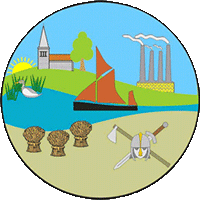The History of Fremasonary
The History of Grand Lodge
Freemasonry in England – The origins of Freemasonry are the subject of great debate. That there is a connection with the operative stonemasons who built the great medieval cathedrals and castles is generally accepted by Masonic historians – but whether that connection was direct or indirect is the subject of speculation.
The first record of the making of an English Freemason is Elias Ashmole, the antiquarian and herald, whose collections formed the basis of the Ashmolean Museum in Oxford. He recorded in his diary that a lodge met at his father-in-law’s house in Warrington, Cheshire on 16 October 1646 to make him a Mason. None of those involved was a stonemason. In the later 1600s there is further evidence for the existence of Freemasonry as a separate organisation unrelated to groups controlling the stonemason’s craft.
Organised Freemasonry became established on 24 June 1717 when four London lodges came together at the Goose and Gridiron Ale House, St Paul’s Churchyard, formed themselves into a Grand Lodge and elected Anthony Sayer, Gentleman, as their Grand Master – the first Grand Lodge in the world. Initially the Grand Lodge was simply an annual feast for lodges in London but in 1721 John, Duke of Montagu, was elected Grand Master and the Grand Lodge met in ‘quarterly communication’ and began to establish itself as a regulatory body, attracting to it lodges meeting outside London.
In 1723 the first rulebook – the Constitutions of Masonry – was published and William Cowper, Clerk of the Parliaments, was appointed Secretary to the Grand Lodge to keep minutes of its meetings. By 1730 the Grand Lodge had over 100 lodges in England and Wales under its control and had begun to spread Freemasonry abroad, warranting lodges to meet in Madrid and Calcutta.
For historical reasons separate Grand Lodges were formed in Ireland (1725) and Scotland (1736). Between them the ‘home’ Grand Lodges took Freemasonry around the globe. From the 1730s lodges were set up in Europe, the West Indies, North America and India.
In the later 18th and the 19th centuries British Freemasonry was taken to the Mid and Far East, Australasia, Africa and South America, mirroring the development of the British Empire. When those areas eventually achieved nation status many of the lodges formed independent local Grand Lodges, but other lodges decided to remain with their parent Grand Lodge – resulting in the United Grand Lodge of England still having some 750 lodges overseas, principally in Commonwealth countries.
The premier Grand Lodge of England continued developing in the 1730s and 1740s without any opposition. There had been considerable public interest – meetings were advertised and reported on in the growing number of local newspapers – more especially in what the ceremonies of Freemasonry were. Enterprising journalists and pamphleteers were not slow to produce ‘exposures’ of what they believed were the ‘secrets’ of Freemasonry. Publicity increased interest and a growing number of aristocrats, landed gentry and professional men began to seek admission. In 1737 the first Royal Freemason was made – Frederick Lewis, Prince of Wales, son of King George II.
